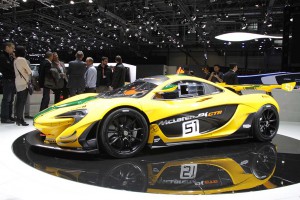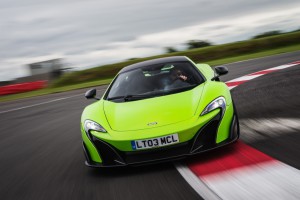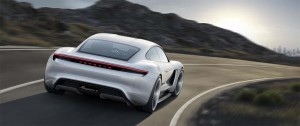Despite sluggish battery-car sales at a time when gas prices are running barely half their 2014 record high, automakers are laying out plans to add lots more electrified models in the coming years. And for those who might not find a Toyota Prius, Chevrolet Volt or Nissan Leaf quite stimulating enough, one might consider McLaren as an alternative.
McLaren, as in the British company that has been rolling out a growing range of supercars, such as the 675LT and the P1. The latter model, costing more than $1 million, just happens to be a plug-in hybrid. And, it seems, McLaren has plans to add a lot more green machines going forward.
McLaren sold 1,654 vehicles worldwide last year, and it is looking to grow that to as much as 5,000 by early in the next day, CEO Mike Flewitt told Automotive News Europe. He also noted that, “In the latter part of this business plan to 2022, more than half our cars will be hybrids.”
The British marque, long a dominant force on the Formula One circuit, is now developing a “completely new powertrain architecture” which, Flewitt explained, is “specifically designed for a hybridized application.”
McLaren is actually not alone among high-performance manufacturers in adopting greener, battery-based technology.
Rival Porsche’s 918 Spyder was a plug-in hybrid, as was the limited-edition Ferrari flagship, the LaFerrari. Porsche has added a number of less expensive plug-in models and is developing a new, high-performance sports car that will use a pure battery-electric drivetrain, the Mission E. Aston Martin recently announced a joint venture with Chinese EV start-up LeEco.
(For more on the Aston Martin/LeEco alliance, Click Here.)
Another British maker, Bentley, plans to bring a plug-in version of its new Bentayga SUV to market sometime in late 2017 or early 2018. Meanwhile, U.S. CEO Michael Winkler last week told TheDetroitBureau.com. that Bentley is giving serious thought to developing an all-electric powertrain, though he declined to say which model or models might use it.
One reason for going electric, according to Winkler, is that “Some places around the world, like London, are considering rules that may not let you drive into the city in a car that isn’t electrified.”
(For more on Bentley’s battery-car plans, Click Here.)
Even where vehicles won’t face such draconian rules, there are tough new emissions and mileage standards going into effect everywhere from China to the U.S. to Europe.
The key driver is to meet emissions targets,” said McLaren boss Hewitt. “The only real solution is a hybrid powertrain. What’s very important is that it won’t just be a hybrid variant, it will be fully integrated. It needs to add to the experience.”
While it might seem an oxymoron, high-performance engineers like some of the potential advantages offered by electrification. Unlike the internal combustion engine, which must rev up to reach maximum, tire-spinning torque, electric motors deliver peak torque the moment they start spinning. The newly reborn Acura NSX uses that to deliver neck-snapping, off-the-line power as its turbo V-6 is building up the revs.
The NSX also shows how electric motors can readily vector torque to a car’s outer wheels, helping steer it through a tight corner.
In McLaren’s case, “We need to invest a lot of money to be able to produce cars that are competitive against some pretty high-powered competition,” CEO Flewitt said, apparently using whatever technology will give it an edge.
(At least 17 fuel-cell vehicles set to debut over the next decade. Click Here for the latest on these hydrogen cars.)



